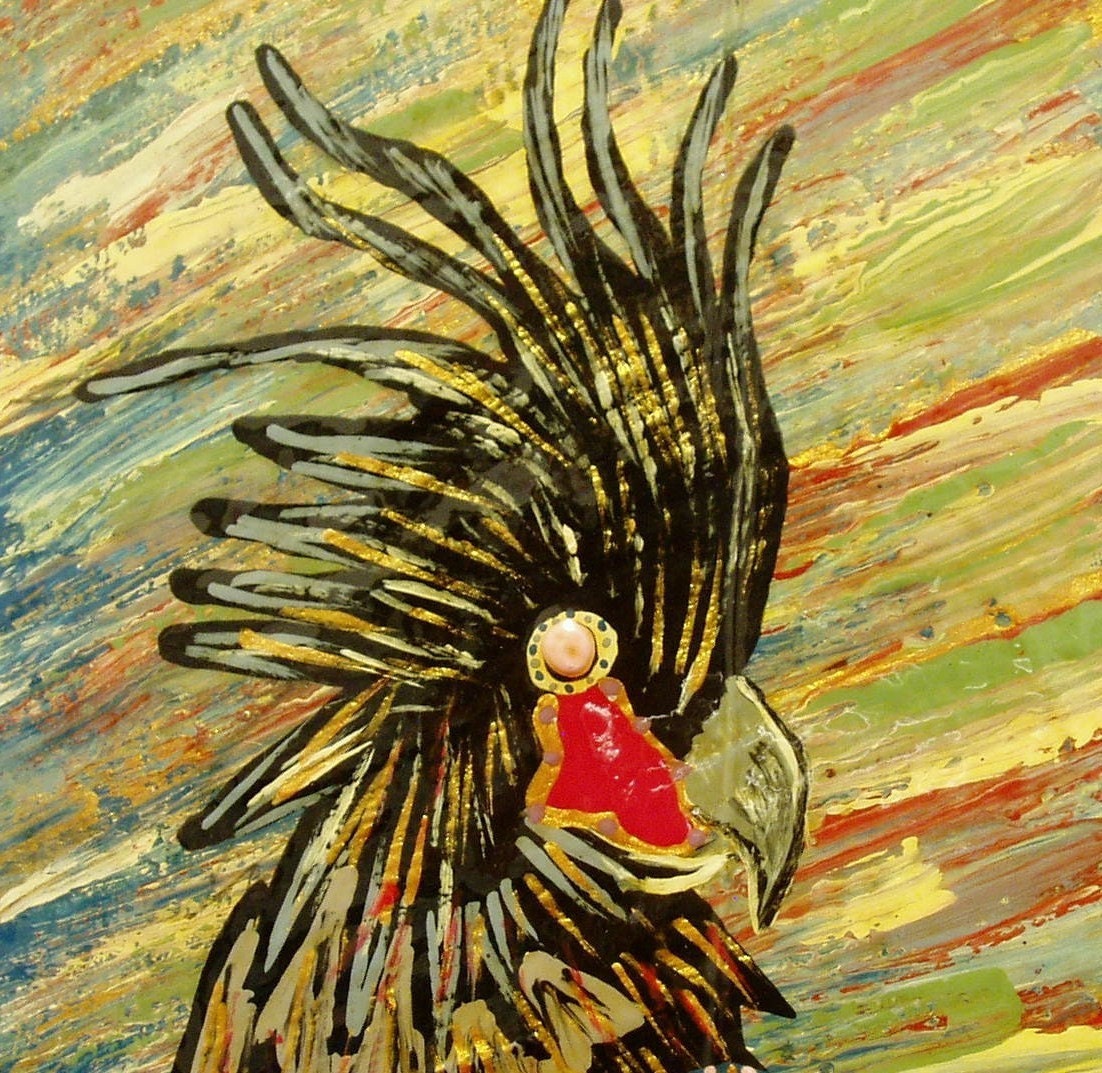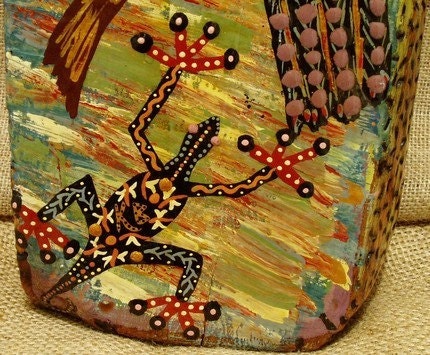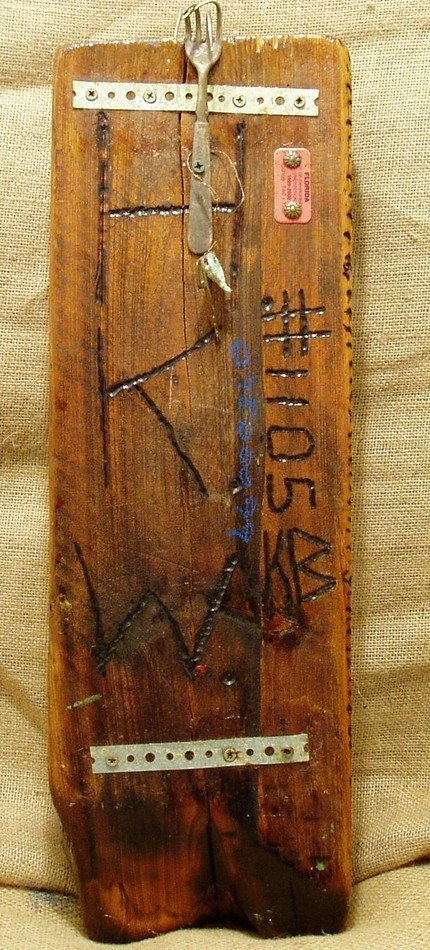Published in TB2
BY SOHINI LAHIRI, King High
Growing up in Tampa, I spent a period of time fascinated by a quirky, eye-catching landmark at Fletcher Avenue and Interstate 75. This was also the period of time I spent obsessed with making binoculars out of toilet paper rolls and necklaces out of pop tops. To me, this sight was the epitome of similar creative craziness, and I often found myself looking for it during car journeys, hoping it hadn’t disappeared overnight.
But time passes and so does the urge for pop-top necklaces, and observant eyes don’t notice the same sights. It wasn’t until recently that I once again took note of the scene, with its broken down orange helicopter, a tree made of what seems to be indestructible balloons and a blue-and-white house covered with trash remade into art.
It’s the home of Hong Kong Willie, artist of reuse.
I finally paid a visit to this art gallery after many years of wondering about the story behind it. The pavement leading to the door is painted with handprints and splatters, the store edged with upside down Coke bottles. Streams of lobster buoys hang from the roof and also make up the “tree” I marveled at so often from my car window.
Various shoes, bottles, clocks and signs are glued to the side of the store, and there’s a tribute to Sept. 11 off to the side. No one seemed to be home, so I called the number on the “WE’RE OPEN” sign, which brought a middle-aged man in a bright Hawaiian shirt from behind the store.
After a few basic questions, Joe Brown begins to open up about the history surrounding his art.
Brown, better known as Hong Kong Willie, says he was an artist from the start. “Everyone is born an artist,” he said. “However some are granted the gift of being able to express that art.”
As a young boy, his mother decided to send him to art school, which he says changed the course of his life forever.
At the age of 8, Brown recalls being heavily influenced by the lessons, which included transforming a Gerber baby bottle, something with no real value, into a piece of art. His teacher had spent an enormous amount of time and effort in Hiroshima, Japan, helping those affected by the atomic bombs. Brown learned many lessons about recycling from this teacher, who had come from Hong Kong. Brown added an American name, Willie, to Hong Kong for his nickname Hong Kong Willie.
While Brown grew up to be an artist, he left the world of mainstream art to return to his background in technology.
“But on Nov. 13th, 1981 … on a Friday at 1:30 in the afternoon, I had an epiphany,” Brown says. “I was at a friend’s house right across the street,” pausing to point at a row of apartments across from his store, “and a series of events led me to rejoin the art world.”
With the help of two other artists, Brown set up his business in the Florida Keys in the early 1980s, then moved it to Tampa. Together, they believed that they were predestined for the Green Movement, and have been making art out of recyclables for close to 30 years.
How’s business? He smiles. “It’s pretty wild.”
Inside, Hong Kong Willie’s art includes glossy pieces of driftwood restored and painted with beautiful landscapes and kernels of truth, some of the gorgeous work priced in the six figures. But there’s also a wide collection of handmade bags, wooden sculptures and sassy bracelets for more moderate prices.
A portion of the proceeds go to benefit the Green Movement, Brown says.
With a laid-back swagger, Brown continues. “We live pretty minimally. And all the funds we get from donations and our art sales are delegated to green projects.”
I’m not sure what I was expecting when I decided to visit Hong Kong Willie. Certainly not the breathtaking art inside, and definitely not the history behind it. I’m feeling thick-headed for not visiting years ago, and say so.
Brown offers a last bit of insight:
“I’m a big believer in predestination and timing. If someone is not ready to view art, the door is closed. Every piece of art that is made, and every project we do is done for a reason. It doesn’t matter if that reason shows up the next day, or walks in six years later; every piece of art will find a home.”
FUNDING FOR THIS PROGRAM IS MADE POSSIBLE BY THE
S.L. GIMBEL FOUNDATION.
IN THIS EDITION OF "WEDU ARTS PLUS,Hongkongwillie
Famous American Recycling Artist
HONG KONG WILLIE ART GROUP
Famed, by the humble statements from the Key West Citizen, viable art from reuse has found its time. To Live a life in the art world and be so blessed to make a social impact. Artists are to give back, talent is to tell a story, to make change. Reuse is a life experience
ART FOR SALE MYSTERIOSITY
HONG KONG WILLIE ART GROUP

$176,000 U.S. Dollars
Hong Kong Willie Gallery
16For God so loved the world, that he gave his only begotten Son, that whosoever believeth in him should not perish, but have everlasting life.





BY SOHINI LAHIRI, King High
Growing up in Tampa, I spent a period of time fascinated by a quirky, eye-catching landmark at Fletcher Avenue and Interstate 75. This was also the period of time I spent obsessed with making binoculars out of toilet paper rolls and necklaces out of pop tops. To me, this sight was the epitome of similar creative craziness, and I often found myself looking for it during car journeys, hoping it hadn’t disappeared overnight.
But time passes and so does the urge for pop-top necklaces, and observant eyes don’t notice the same sights. It wasn’t until recently that I once again took note of the scene, with its broken down orange helicopter, a tree made of what seems to be indestructible balloons and a blue-and-white house covered with trash remade into art.
It’s the home of Hong Kong Willie, artist of reuse.
I finally paid a visit to this art gallery after many years of wondering about the story behind it. The pavement leading to the door is painted with handprints and splatters, the store edged with upside down Coke bottles. Streams of lobster buoys hang from the roof and also make up the “tree” I marveled at so often from my car window.
Various shoes, bottles, clocks and signs are glued to the side of the store, and there’s a tribute to Sept. 11 off to the side. No one seemed to be home, so I called the number on the “WE’RE OPEN” sign, which brought a middle-aged man in a bright Hawaiian shirt from behind the store.
After a few basic questions, Joe Brown begins to open up about the history surrounding his art.
Brown, better known as Hong Kong Willie, says he was an artist from the start. “Everyone is born an artist,” he said. “However some are granted the gift of being able to express that art.”
As a young boy, his mother decided to send him to art school, which he says changed the course of his life forever.
At the age of 8, Brown recalls being heavily influenced by the lessons, which included transforming a Gerber baby bottle, something with no real value, into a piece of art. His teacher had spent an enormous amount of time and effort in Hiroshima, Japan, helping those affected by the atomic bombs. Brown learned many lessons about recycling from this teacher, who had come from Hong Kong. Brown added an American name, Willie, to Hong Kong for his nickname Hong Kong Willie.
While Brown grew up to be an artist, he left the world of mainstream art to return to his background in technology.
“But on Nov. 13th, 1981 … on a Friday at 1:30 in the afternoon, I had an epiphany,” Brown says. “I was at a friend’s house right across the street,” pausing to point at a row of apartments across from his store, “and a series of events led me to rejoin the art world.”
With the help of two other artists, Brown set up his business in the Florida Keys in the early 1980s, then moved it to Tampa. Together, they believed that they were predestined for the Green Movement, and have been making art out of recyclables for close to 30 years.
How’s business? He smiles. “It’s pretty wild.”
Inside, Hong Kong Willie’s art includes glossy pieces of driftwood restored and painted with beautiful landscapes and kernels of truth, some of the gorgeous work priced in the six figures. But there’s also a wide collection of handmade bags, wooden sculptures and sassy bracelets for more moderate prices.
A portion of the proceeds go to benefit the Green Movement, Brown says.
With a laid-back swagger, Brown continues. “We live pretty minimally. And all the funds we get from donations and our art sales are delegated to green projects.”
I’m not sure what I was expecting when I decided to visit Hong Kong Willie. Certainly not the breathtaking art inside, and definitely not the history behind it. I’m feeling thick-headed for not visiting years ago, and say so.
Brown offers a last bit of insight:
“I’m a big believer in predestination and timing. If someone is not ready to view art, the door is closed. Every piece of art that is made, and every project we do is done for a reason. It doesn’t matter if that reason shows up the next day, or walks in six years later; every piece of art will find a home.”
FUNDING FOR THIS PROGRAM IS MADE POSSIBLE BY THE
S.L. GIMBEL FOUNDATION.
IN THIS EDITION OF "WEDU ARTS PLUS,Hongkongwillie
Famous American Recycling Artist
Blue Marlin Dream of Key West.
$225,000 Hong Kong Willie Art
The Gunn Highway Landfill is located
off Gunn Highway in Tampa, Hillsborough
County, Florida. The county operated the landfill
as a trench-type facility for the disposal
of MSW from 1958 to 1962.HONG KONG WILLIE ART GROUP
Famed, by the humble statements from the Key West Citizen, viable art from reuse has found its time. To Live a life in the art world and be so blessed to make a social impact. Artists are to give back, talent is to tell a story, to make change. Reuse is a life experience
ART FOR SALE MYSTERIOSITY
HONG KONG WILLIE ART GROUP

$176,000 U.S. Dollars
Hong Kong Willie Gallery
John 3:16
King James Version (KJV)
16For God so loved the world, that he gave his only begotten Son, that whosoever believeth in him should not perish, but have everlasting life.
Black Bird of Key Largo Hong Kong Willie Art $98,000
To Buy Contact Hongkongwillie





"Black Bird of Key Largo"
The
allurement of the winds blowing in the palm trees and the moon shining
through and the "Black Bird of Key Largo" looking upon.
Hong Kong Willie
**HONG
KONG WILLIE artist Kim Brown, chose aged Florida sawmill stock as
canvas. Recovered Brass Hanger: Key West lobster trap rigging.
Originally connects and suspends rigging of spiny lobster traps in Key
West waters. Candy-like appearance due to multiple protective layers.
Assigned number in artist register by Fisherman ID tag, corresponding
burn-etched # rear of piece. Key recovered by Robert Jordan, acclaimed
treasure hunter: also in identification of piece and artist.
Dimensions:
24" L
8" W
4" H
Weight: 17+ LB



No comments:
Post a Comment